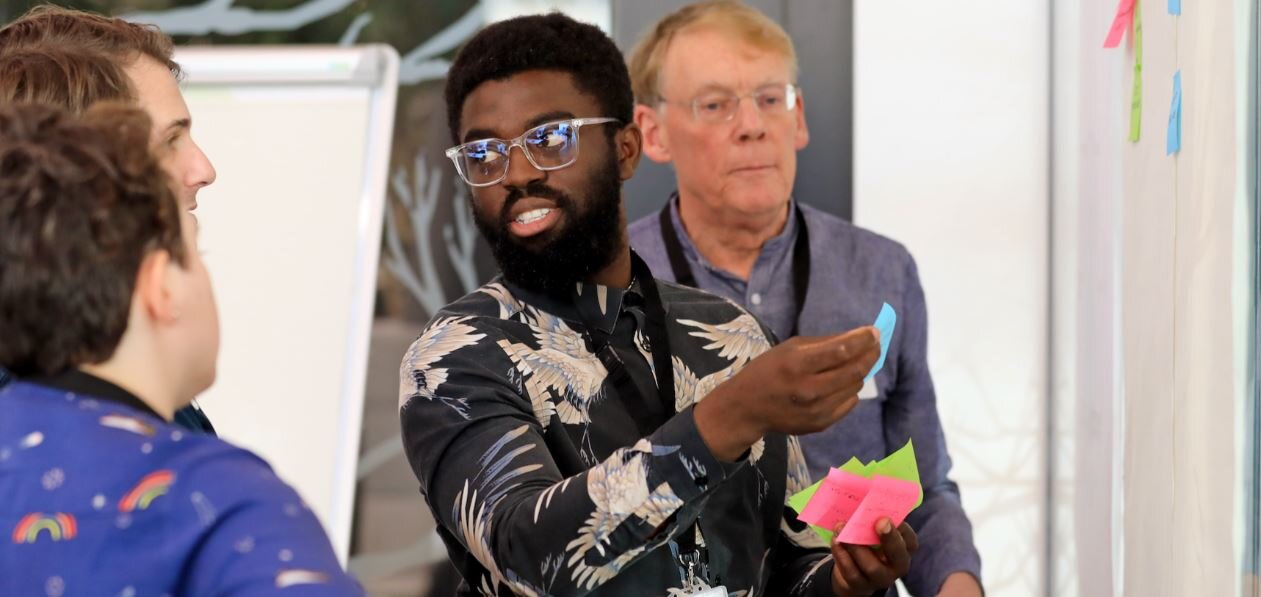How do you measure design?
Design is complex. And so is measuring it. So just how do you go about it? On behalf of BOP Consulting and UAL, Lucy Kimbell and Jonathan Todd highlight the nebulous nature of design, the challenges around assessing it, and the methodologies our researchers will be using to better understand its value.

When thinking about design’s historic home turf of manufacturing, graphics and architecture, it is relatively easy to find designers operating in sectors which result in industrial products, consumer goods or changes to the built environment. Often these match on to the codes for industrial classifications of firms within national data sets. But there is also a wealth of professional design activity outside these settings. And to find evidence about the emerging, and possibly growing roles for professional design in, for example, services relating to healthcare, finance, education and in the public sector is
more difficult.
Adding to this complicated picture is the uneven nature of design professions. In some areas of knowledge work, only those with specific, regulated expertise are allowed to practise – notably architecture and engineering in the design economy. Beyond the boundaries of the regulated professions, other forms of design proliferate and change. For these reasons, there is no one way to establish the use of design, its impacts and its potential value across all sectors of design.
Then there’s the data to consider. Data gathering and interpretation are not neutral: they exist where people have invested resources to find things out, which can tell us something about their purposes. There are significant ‘data gaps’ for design. This is particularly the case for the social and environmental impacts of design, and for equality, diversity and inclusion in design. It is clear that accounting for these has not been a priority in the past. Whatever approach is pursued for Design Economy: 2021–2024, there will continue to be gaps and omissions. They should be identified, acknowledged and explained. And in claiming specific outcomes of design, it is important to note what data are used and how the data are generated.
Rising to the challenge
To produce the methodology for this research programme, we have taken up the suggestions to use a mixture of methods, including deliberative processes to conceptualise value, alongside other methods to quantify value in specific cases. We have therefore stitched together approaches and types of method and data. In doing so, we will be able to address many of the challenges outlined above, and present a coherent, valid, reliable way to achieve Design Council’s goals of articulating the social, environmental and economic value of design. Alongside this, we can explain in what circumstances these data and methods ‘work’ as evidence, and outline their specific implications and limitations.
It is clear that any approach to assessing the value of design must be open to further iteration and development. There should be room, for example, for deliberation and contestation about how evidence is generated and used, its relevance to stakeholders, and to changes in how designers might work.
Seeing the bigger picture
BOP’s and UAL’s aim is to put in place a three-year research programme to uncover the bigger picture of the social and environmental impacts of the UK design economy. It means working towards a sociological account of the design economy rather than primarily relying on economic analysis as in
previous years.
We propose combining several elements:
Establishing this project as a shared endeavour across the design economy, with participants as co-researchers, led by Design Council. It will be rooted in a deliberative and anticipatory research methodology, with a steadfast commitment to addressing equality, diversity and inclusion issues.
Underpinning the analysis with an understanding of the interconnecting ‘systems’ in the Design Economy, a theory of change and impact framework to articulate and specify social and environmental impacts and value of design, and recognise how these can reproduce unequal impacts and consequences.
Combining methods to gather and analyse data, and engage the specificities of design through:
- a sector-wide survey of designers and those using design skills, to establish a picture ‘at scale’ and to
- provide sufficient data to estimate gross impact and make projections about future potential value
- demonstrator projects to gather in-depth data and insight from a small number of design organisations to help them better understand and assess their own impacts and value
- deliberative and anticipatory workshops, bringing together diverse people and perspectives across the design economy. In doing so, to generate insights about how design contributions to social and environmental impact can be valued and what the future design economy might look like
- anticipatory analysis showing how design’s future value could be calculated.
This is a prime opportunity to work with the design community and wider public to better articulate the distinctive contributions of designers and design skills across the UK, both now and in the future. By providing a strong evidence base and building new tools, we can come together and paint a fuller picture of the state of design in the UK.
Subscribe to our newsletter
Want to keep up with the latest from the Design Council?
